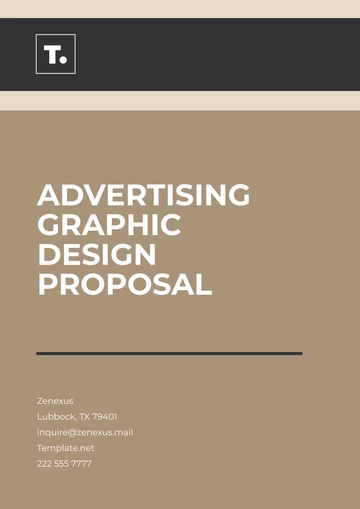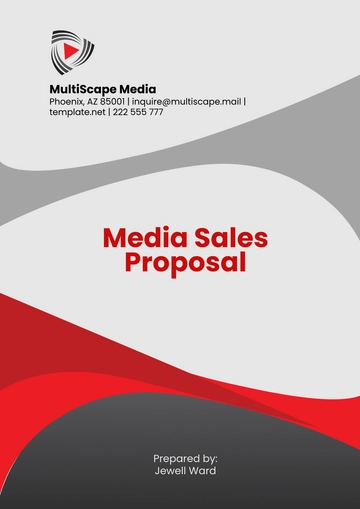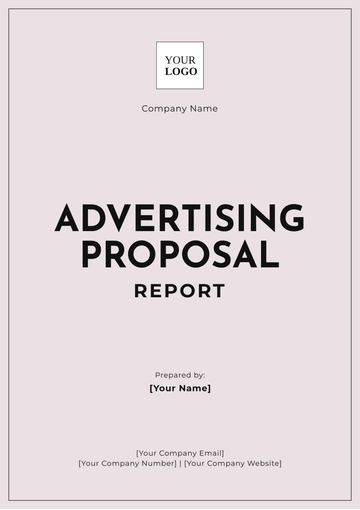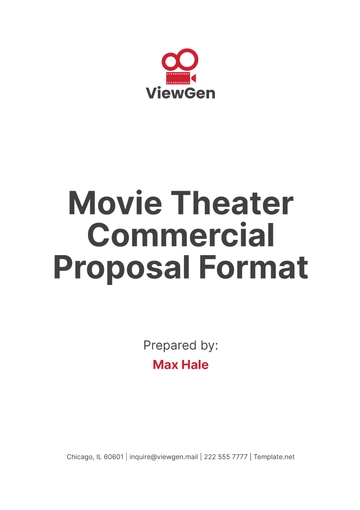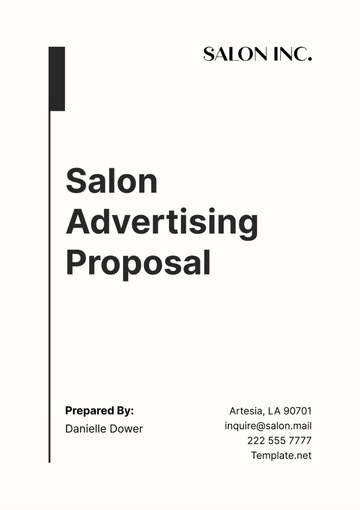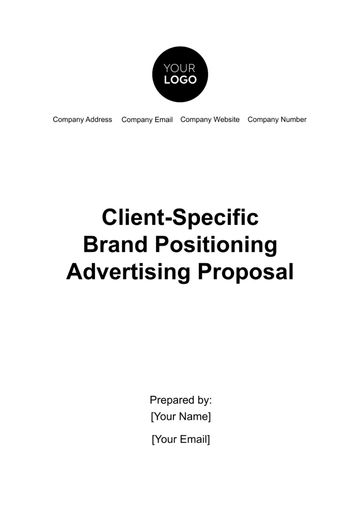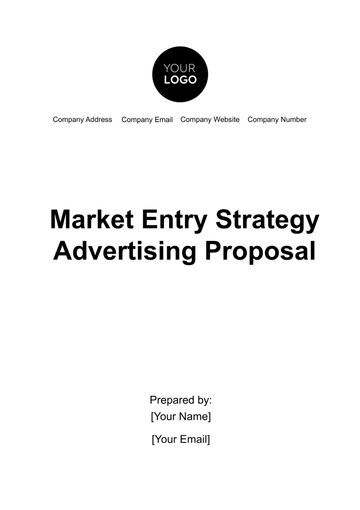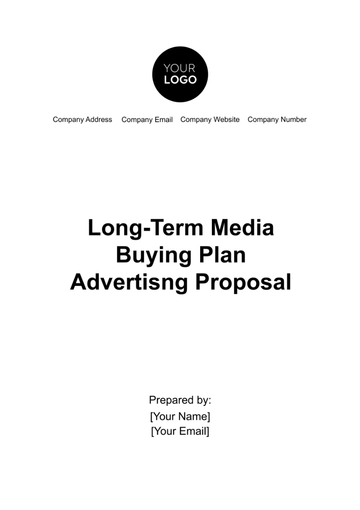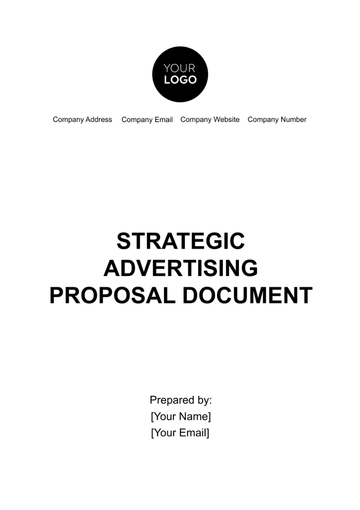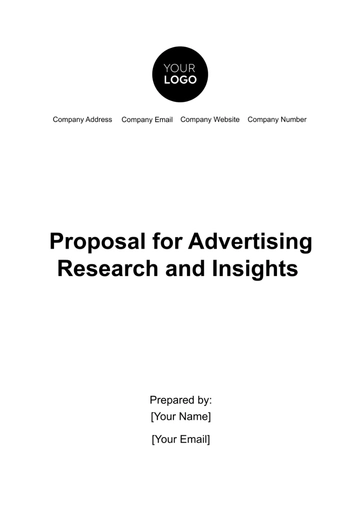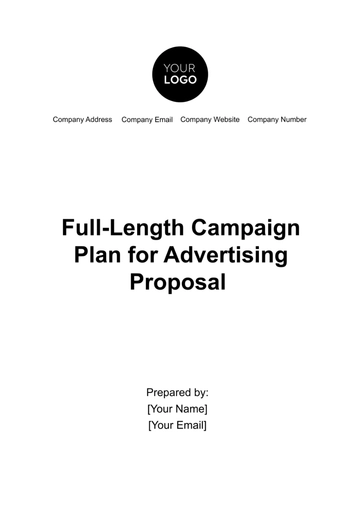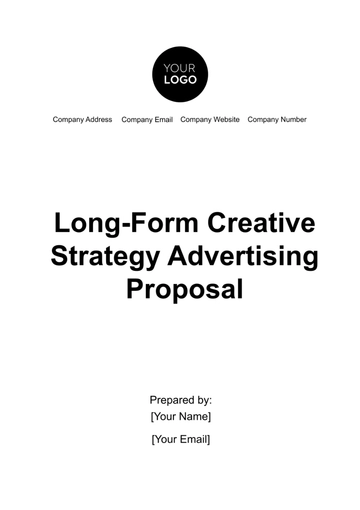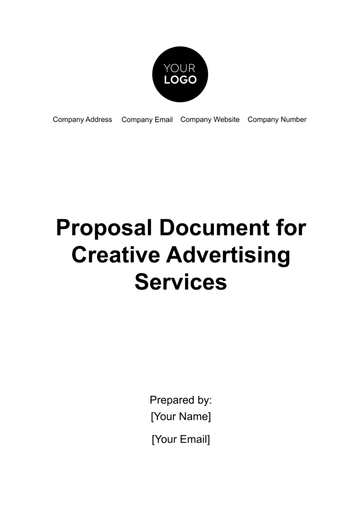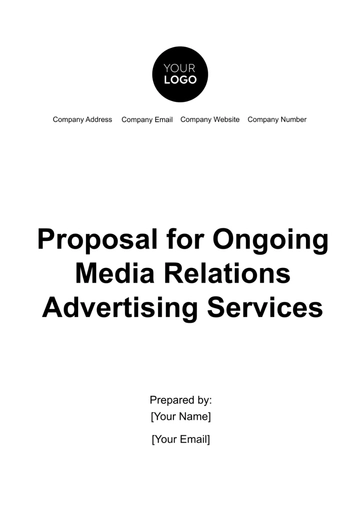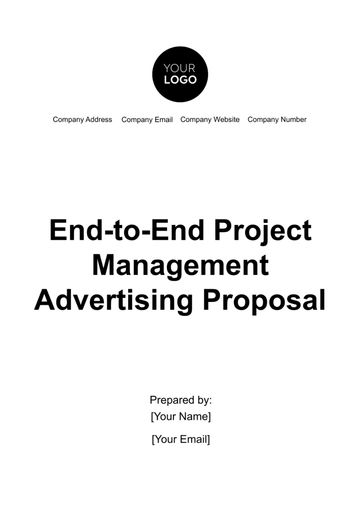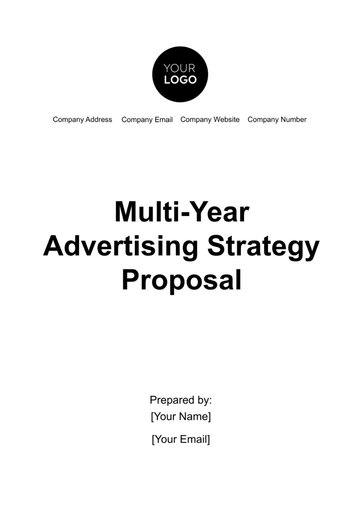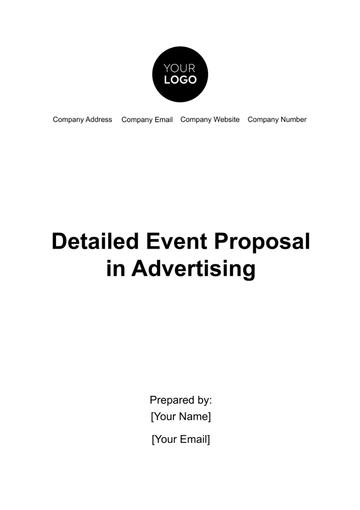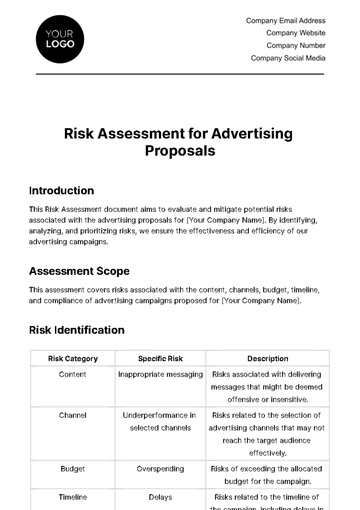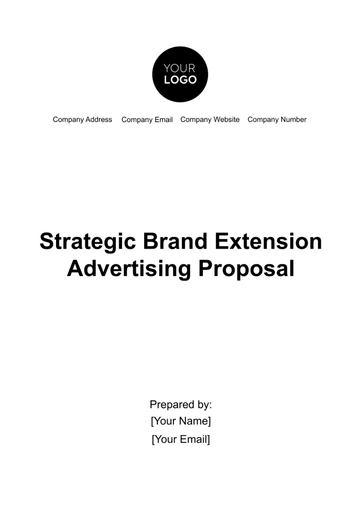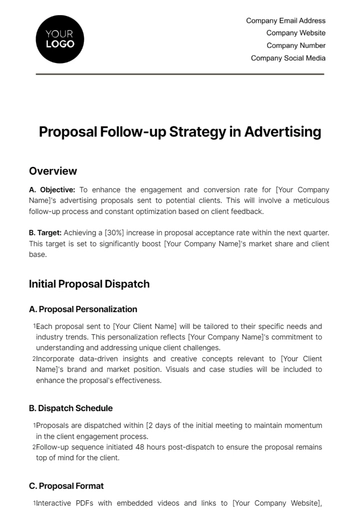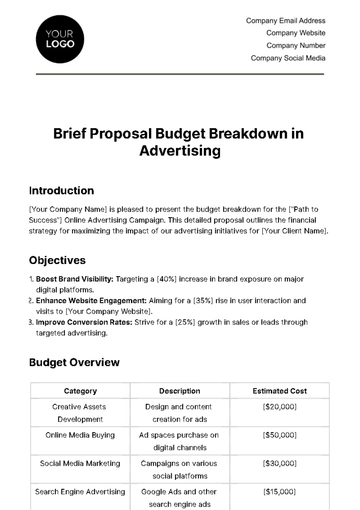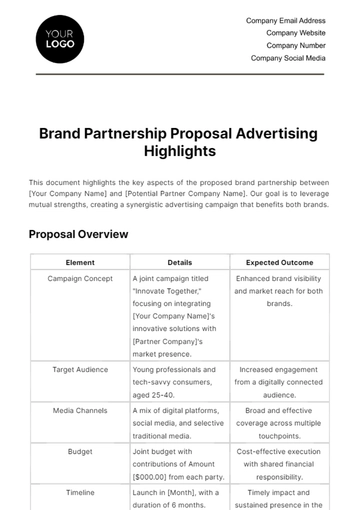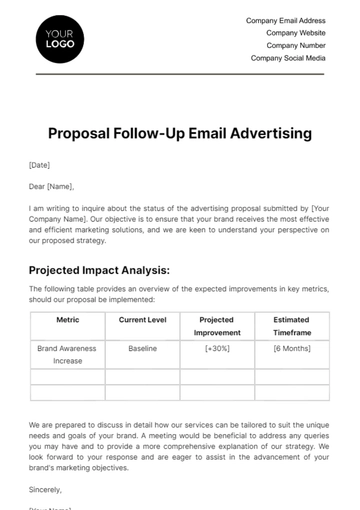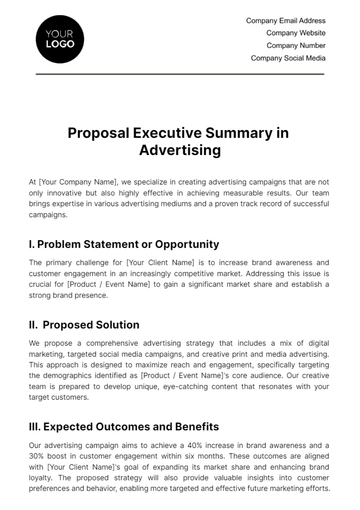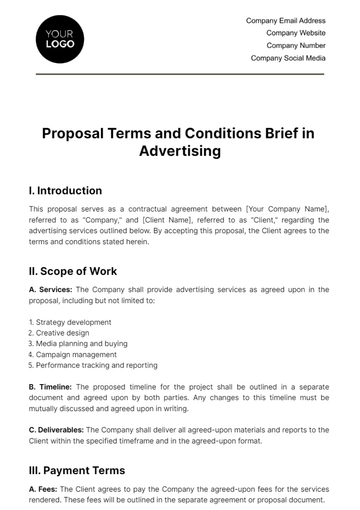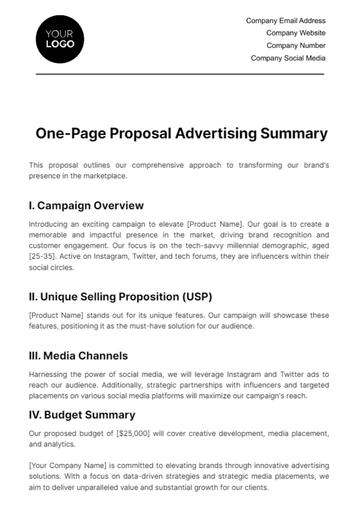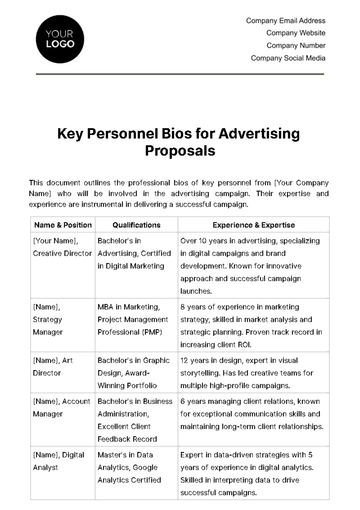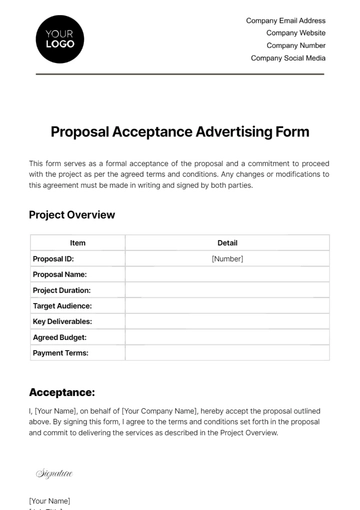Free Full-Length Campaign Plan for Advertising Proposal
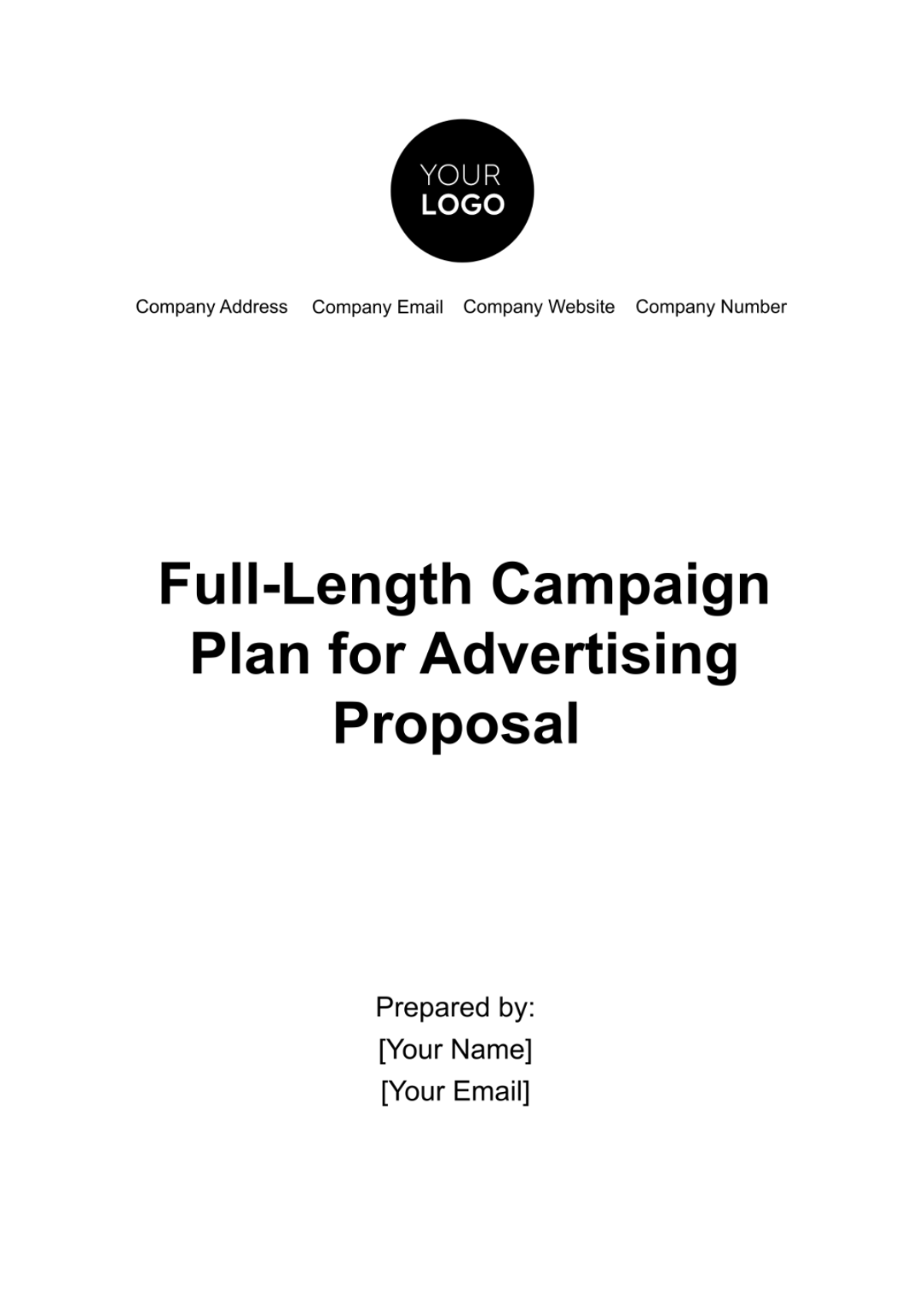
Prepared By: [Your Company Name]
For: [Client Company]
Section 1: Executive Summary
"[Campaign Name]" is an ambitious campaign aimed at repositioning [Client Company Name] as a leader in sustainable products. We aim to connect with environmentally conscious consumers, increasing [Client Company Name]'s market share by leveraging a blend of digital and traditional media.
Objective: To increase brand awareness and market share by 20% over 12 months.
Key Message: "Sustainability in Every Step" highlights [Client Company Name]'s dedication to environmental responsibility.
Target Audience: Adults aged 25-45, predominantly in urban areas, with a lifestyle and values aligned with sustainability.
Section 2: Market Analysis
Current Market Trends
The eco-friendly product market is expanding, especially among younger demographics. Social media is increasingly influencing consumer behavior, with a trend towards sustainable and ethical consumption.
Competitor Analysis
Competitor | Market Share | Key Strengths | Weaknesses |
GreenLife | 30% | Strong brand recognition | Higher price range |
SWOT Analysis
Strengths include [Client Company Name]'s innovative product design. Opportunities for expansion into new markets and digital platforms are significant.
Section 3: Campaign Objectives
Primary Objectives
Enhance [Client Company Name]s brand awareness in the target demographic.
Increase online sales by 30%.
Secondary Objectives
Grow social media following by 25%.
Boost customer engagement and loyalty.
Key Performance Indicators (KPIs)
KPIs include website traffic, sales conversion rates, and social media engagement statistics.
Section 4: Creative Strategy
Concept Development: "[Campaign Name]" centers around a series of heartwarming and inspiring narratives featuring individuals and communities making significant strides in sustainable living. These stories will be portrayed through a mix of video shorts, digital banners, and print ads, each telling a unique story of environmental stewardship.
Messaging: The campaign's messaging will be built around the tagline "Every Step Matters". This message will underscore the importance of individual actions in contributing to a larger environmental impact, positioning [Client Company Name]'s products as essential tools in this journey.
Visual Style: The visual style will incorporate a bright, earth-toned color palette, with imagery focused on natural landscapes, urban greening projects, and relatable moments of everyday eco-friendly living. The style will be clean and modern, appealing to [Client Company Name]'s sophisticated, environmentally-conscious audience.
Section 5: Media Strategy
Media Mix and Budget Allocation
Channel | Allocation | Description |
Digital | 45% | Targeted ads, social media campaigns, and influencer content. |
Scheduling
Digital Campaigns: Rotating bi-weekly themes on social media and targeted ads.
Print and Outdoor: A consistent presence with refreshed visuals bi-monthly.
Television and Radio: Heavier scheduling during peak viewing/listening hours, and around Earth Day and other environmental events.
Section 6: Digital Strategy
Social Media Plan: A robust plan involving daily posts, weekly interactive stories, and monthly live sessions on platforms like Instagram, Facebook, and Twitter. Each platform will be used to its strength – Instagram for visually compelling content, Facebook for community engagement and event promotion, and Twitter for real-time updates and news sharing.
SEO and SEM: The strategy includes optimizing [Client Company Name]'s website with relevant eco-friendly keywords, and running SEM campaigns targeting keywords such as "sustainable products", "eco-friendly living", and "green home solutions".
Email Marketing: A monthly newsletter titled "[Client Company Name]" featuring tips for sustainable living, product spotlights, and customer stories. Special email sequences will be developed for new subscriber welcome series, product launches, and promotional events.
Section 7: Campaign Execution
Timeline: The campaign will be launched in January and will run throughout the year with specific milestones set for each quarter. The first quarter will focus on brand awareness, the second on engagement, the third on conversion, and the fourth on customer loyalty and advocacy.
Resource Allocation: The campaign will be managed by a dedicated team comprising a project manager, creative director, digital marketing specialists, and a media relations team. External resources such as a video production company and a public relations firm will be engaged for specific campaign elements.
Risk Management: Regular monitoring of campaign performance against KPIs, with bi-weekly team meetings to discuss progress and address any issues. Contingency plans include budget reallocation, campaign message adjustment, and alternative media strategies.
Section 8: Partnership and Sponsorship
Collaboration Opportunities: Partnerships with influential eco-bloggers, environmental non-profits, and sustainability-focused events. These partnerships will offer mutual promotion, content collaboration, and event sponsorship opportunities.
Integration Plan: Co-branding efforts with partners will include joint social media campaigns, shared content creation, and collaborative event participation. Sponsorships will be strategically selected to enhance brand visibility and align with [Client Company Name]'s mission.
Mutual Benefits: These partnerships will allow [Client Company Name] to tap into the partners' audiences, enhancing brand reach and credibility, while providing partners with exposure to [Client Company Name]'s customer base and support for their environmental initiatives.
Section 9: Evaluation and Measurement
Data Collection Methods: The campaign will utilize digital analytics tools to track website traffic, social media engagement, and conversion rates. Offline campaign elements will be evaluated through surveys and market research.
Analysis Plan: The data will be analyzed monthly to assess the effectiveness of different campaign elements. Adjustments will be made based on these insights to optimize the campaign's performance.
Reporting Schedule: Comprehensive reports will be prepared and shared with [Client Company Name] Innovations on a bi-monthly basis, providing insights into campaign performance, ROI, and recommendations for future strategies.
Section 10: Budget and Financial Projections
Detailed Budget:
Item | Percentage | Estimated Cost |
Digital Marketing | 45% | $450,000 |
ROI Projections: Anticipate a 20% increase in overall sales, translating to an estimated $2,000,000 in revenue attributable to the campaign.
Contingency Plan: A contingency budget of 10% ($100,000) is allocated to address unforeseen challenges or to capitalize on unexpected opportunities.
Section 11: Customer Engagement and Retention Strategy
Loyalty Program Development: "[Client Company Name] Points" – a loyalty program encouraging repeat purchases and sustainable practices. Customers earn points for purchases, recycling, and participating in sustainability challenges.
Activity | Points Earned | Benefits |
Product Purchase | 10 points | Redeemable for discounts |
Engagement Initiatives: Interactive campaigns such as "Eco-Challenge of the Month" will be run on social media, encouraging customers to share their eco-friendly habits. Top contributors will be featured on [Client Company Name]'s platforms, fostering a sense of community and brand loyalty.
Retention Communication: Personalized email campaigns will be sent to customers based on their purchase history and engagement level. These emails will include product tips, exclusive offers, and personalized product recommendations.
Section 12: Corporate Social Responsibility (CSR) and Sustainability Initiatives
Eco-Friendly Operations: [Client Company Name] Innovations will enhance its commitment to sustainability by optimizing its supply chain for reduced carbon footprint, using recycled materials in packaging, and implementing energy-efficient practices in its operations.
Initiative | Description |
Sustainable Packaging | Use of biodegradable materials for packaging |
Carbon Footprint Reduction | Optimization of supply chain logistics |
Energy Efficiency | Adoption of renewable energy sources |
Community Involvement: [Client Company Name] will engage in community projects such as urban greening programs and environmental education workshops. These initiatives will not only contribute to societal well-being but also enhance [Client Company Name]'s brand image as an environmentally responsible company.
Program | Description | Community Impact |
Urban Greening | Planting trees in urban areas | Improved air quality |
Environmental Workshops | Educating on sustainable practices | Increased awareness |
Partnerships for Sustainability: Collaboration with environmental organizations and NGOs to support global sustainability projects. These partnerships will be leveraged for co-branded campaigns, enhancing [Client Company Name]'s reputation as a leader in corporate sustainability.
Conclusion:
The "[Campaign Name]" campaign, bolstered by innovative digital strategies, customer engagement initiatives, and a strong commitment to sustainability, is designed to significantly elevate [Client Company Name] Innovations' presence in the eco-friendly product market. With a comprehensive approach encompassing media strategy, digital innovation, customer retention, and CSR activities, this campaign is poised to not only increase [Client Company Name]'s market share and brand loyalty but also reinforce its position as an environmentally responsible brand. This detailed roadmap, backed by strategic planning and a deep understanding of market dynamics, sets the stage for [Client Company Name]'s success in the evolving green market landscape.
- 100% Customizable, free editor
- Access 1 Million+ Templates, photo’s & graphics
- Download or share as a template
- Click and replace photos, graphics, text, backgrounds
- Resize, crop, AI write & more
- Access advanced editor
Introducing Template.net's Full-Length Campaign Plan for Advertising Proposal Template. This versatile tool, editable and customizable through our Ai Editor Tool, offers a comprehensive framework for crafting compelling campaign strategies. Seamlessly integrate budgets, timelines, and creative concepts to present impactful proposals and drive advertising success. Elevate your campaigns with Template.net's innovative solutions.
You may also like
- Business Proposal
- Research Proposal
- Proposal Request
- Project Proposal
- Grant Proposal
- Photography Proposal
- Job Proposal
- Budget Proposal
- Marketing Proposal
- Branding Proposal
- Advertising Proposal
- Sales Proposal
- Startup Proposal
- Event Proposal
- Creative Proposal
- Restaurant Proposal
- Blank Proposal
- One Page Proposal
- Proposal Report
- IT Proposal
- Non Profit Proposal
- Training Proposal
- Construction Proposal
- School Proposal
- Cleaning Proposal
- Contract Proposal
- HR Proposal
- Travel Agency Proposal
- Small Business Proposal
- Investment Proposal
- Bid Proposal
- Retail Business Proposal
- Sponsorship Proposal
- Academic Proposal
- Partnership Proposal
- Work Proposal
- Agency Proposal
- University Proposal
- Accounting Proposal
- Real Estate Proposal
- Hotel Proposal
- Product Proposal
- Advertising Agency Proposal
- Development Proposal
- Loan Proposal
- Website Proposal
- Nursing Home Proposal
- Financial Proposal
- Salon Proposal
- Freelancer Proposal
- Funding Proposal
- Work from Home Proposal
- Company Proposal
- Consulting Proposal
- Educational Proposal
- Construction Bid Proposal
- Interior Design Proposal
- New Product Proposal
- Sports Proposal
- Corporate Proposal
- Food Proposal
- Property Proposal
- Maintenance Proposal
- Purchase Proposal
- Rental Proposal
- Recruitment Proposal
- Social Media Proposal
- Travel Proposal
- Trip Proposal
- Software Proposal
- Conference Proposal
- Graphic Design Proposal
- Law Firm Proposal
- Medical Proposal
- Music Proposal
- Pricing Proposal
- SEO Proposal
- Strategy Proposal
- Technical Proposal
- Coaching Proposal
- Ecommerce Proposal
- Fundraising Proposal
- Landscaping Proposal
- Charity Proposal
- Contractor Proposal
- Exhibition Proposal
- Art Proposal
- Mobile Proposal
- Equipment Proposal
- Student Proposal
- Engineering Proposal
- Business Proposal
